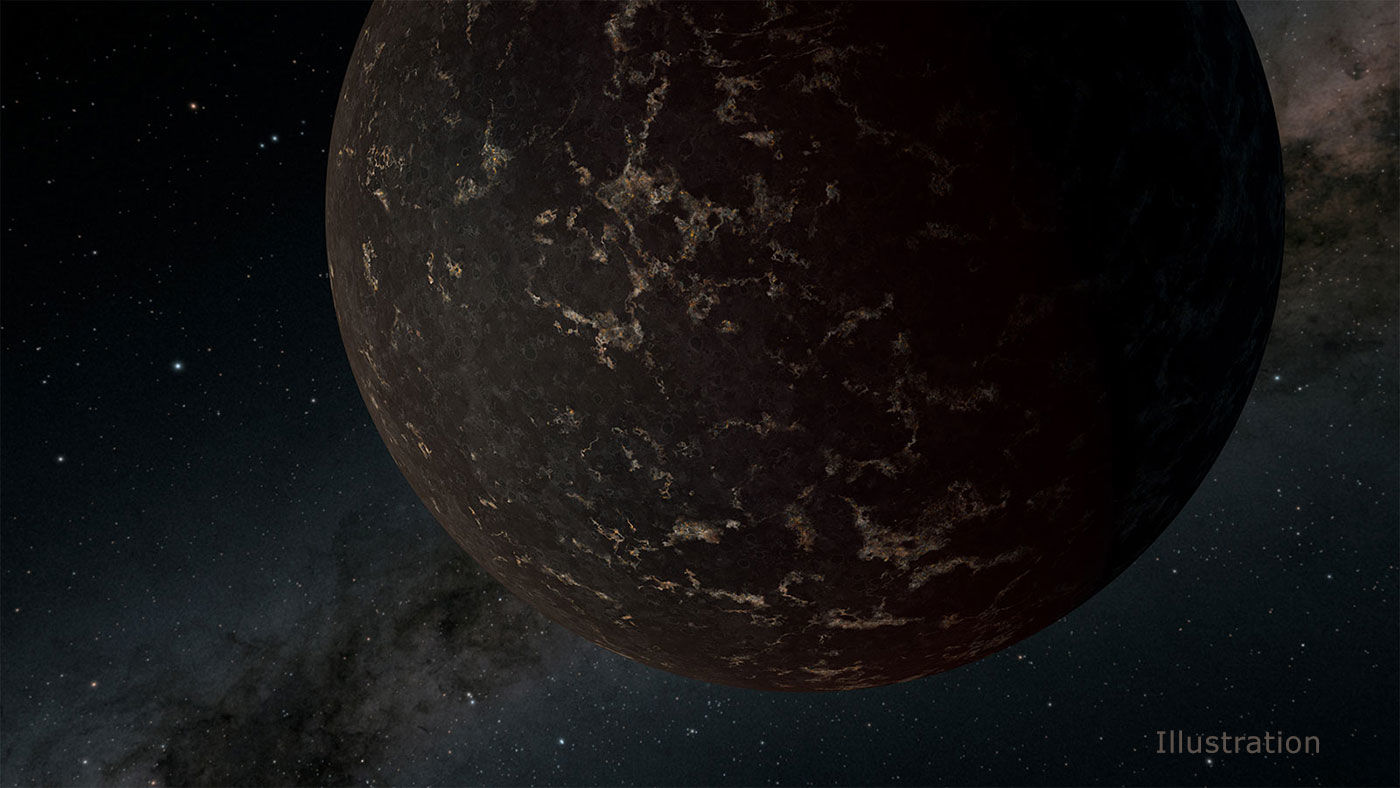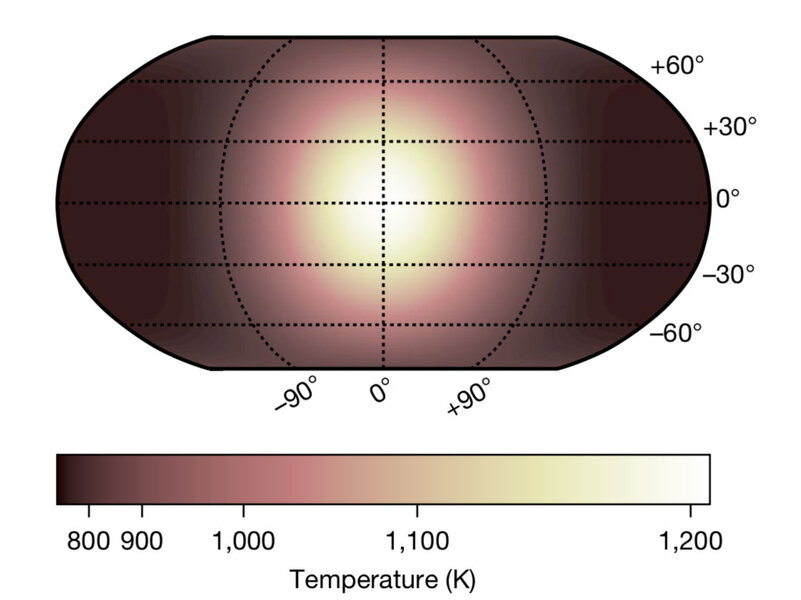Create a free profile to get unlimited access to exclusive videos, sweepstakes, and more!
A broiling exoplanet had its air blasted away by its star

The exoplanet LHC 3844b is what we call a super-Earth: With a diameter of roughly 17,000 km it's roughly 30% bigger than our own beloved home world. But habitable it most definitely ain't: Although it orbits a relatively cool red dwarf star, it's so close — just 950,000 km from the star, less than three times the distance of the Moon from Earth! — it gets cooked by the heat.
We know about it because once per orbit (which, by the way, is a dizzying 11 hours long — its year is less than our day!) it passes directly between us and the star, creating a transit, a mini-eclipse. It blocks a fraction of the star's light, and that can be detected. It was first seen in Transiting Exoplanet Sky Survey (TESS) data in 2018.
The star LHC 3844 is only about 48 light years away, so it's pretty close in terms of the galaxy (which is well over 100,000 light years across). Red dwarfs are intrinsically faint, so its proximity is a good thing, making it bright enough to observe.
This presents an intriguing possibility: Observations can be made to see if the planet has an atmosphere! Because the planet orbits so closely to the star, it'll be tidally locked to it, rotating once for every time it orbits the star, so it always presents one face to it (the exact same phenomenon is why we only see one side of the Moon). If the planet has an atmosphere, then at the spot directly under the star (where it's always noon) the air will get very hot and blow around to the other side of the planet. This in turn means the star-facing side won't be as hot as you expect, and the side facing away won't be as cold.
So a team of astronomers used the venerable Spitzer Space Telescope to observe LHC 3844b in the infrared (from 4-5 microns, well outside what our eyes can see). At those wavelengths they can measure the temperature of the planet due to the heat it emits.
What they found is remarkable: It looks like the planet doesn't have an atmosphere at all!
They see this in a few ways. One is that the transit is very deep. If the planet had a thick atmosphere, then the dark side of the planet would be warmer than you'd expect for bare rock. That means they'd expect to see a little more glow from the planet's dark side, adding a bit of light that otherwise wouldn't be there. They didn't see that, and they found this rules out an atmosphere with a surface pressure more than 10 times Earth's.
But an atmosphere thinner than this wouldn't last long. The planet is so close to the star that the star's solar wind would essentially sandblast it over time, eroding it away. So their observations rule out a thick atmosphere, while the planet's conditions themselves rule out a thin one! What's left is… nothing. No air.
An interesting tidbit is that because this planet makes an orbit every 11 hours, it goes through phases like the Moon does in our own sky. When the planet is on the far side of the star it will appear fully illuminated to us (full), when it's 90° around from that point it will appear half lit (first or third quarter), and when it transits we see the unilluminated half (new). By measuring the change of the planet's brightness over its orbit, they found that it's most consistent with a planet made of dark rock.
They also find that it is indeed tidally locked; the brightest (and therefore hottest) part of the planet sits right under the star (if you were on that part of the planet the star would always be high in the sky, and on the equator would be directly overhead). In some planets that hottest spot is actually eastward of the sub-stellar point; that indicates they have a thick atmosphere with winds carrying the heat away. So again, this is consistent with the planet having no air at all.
Mind you, this planet is an extreme example! It sits very close to its star and gets blasted by heat and a subatomic particle wind. It would be very interesting to look at similarly sized planets that are farther out from their stars, and see if they have atmospheres or not. That would help astronomers understand the physics of atmospheric erosion. That's something we see here in our own solar system: Venus has a tremendously thick atmosphere, we have a decent one, and Mars doesn't have much of one at all. That's the opposite of what you might think, since Venus is closest to the Sun! But magnetic fields and runaway greenhouse effects play a strong role here too, which means that we need to be careful when looking at exoplanets. There are lots of confounding effects, so we need to look at lots of them to figure out what's what.
And, as usual, may I add how much I love this? We didn't know exoplanets even existed when I started grad school, and now we're finding and characterizing hellworlds that outstrip even the grimmest imagination of any sci-fi author.
The Universe is turning it to be every bit as cool as I ever hoped it would be.




























